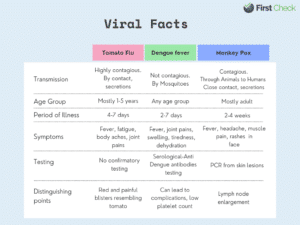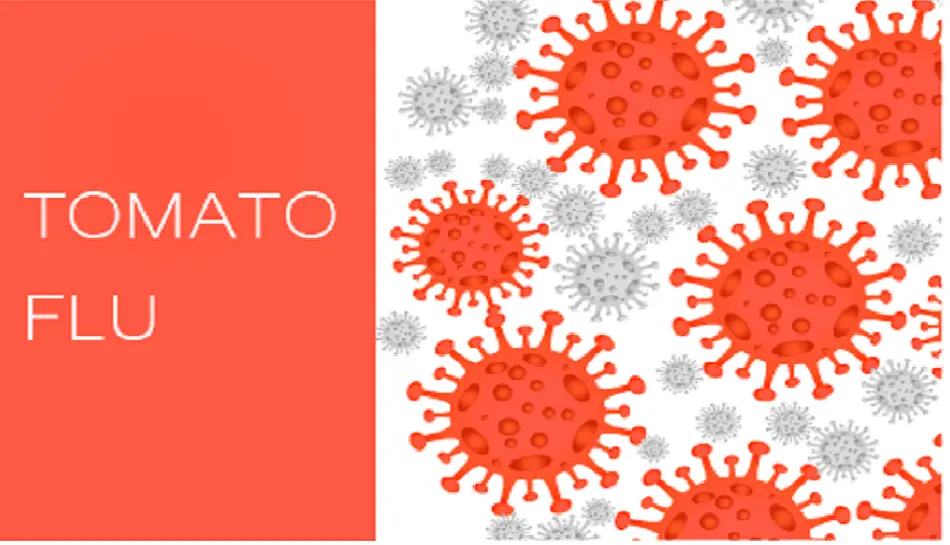There is no swab or blood test to confirm Tomato fever. But as the clinical presentation is similar to Dengue, COVID and Chikungunya, clinicians may do tests to rule out these conditions.
As many children are now presenting to paediatric outpatient clinics with viral symptoms, particularly fever and rash, the most common question pediatricians face is – how do we know if it’s tomato fever, dengue, Monkeypox infection, or hand, foot and mouth disease (HFMD)? We are witnessing increasing panic amongst parents due to rise in new outbreaks, along with existing recurrent influenzae type illness.
What is Tomato fever?
The name is based on the size, shape and colour of the blisters, which appear on the body and look like red tomatoes. There is no link to consuming tomatoes or tomato plants. Tomato fever or Tomato flu is commonly reported in younger children and is believed to be caused by virus of enterovirus family, which also causes HFMD.
In India, the outbreak has predominantly been witnessed in Kerala, Tamil Nadu and Odisha, with the first case being reported in May 2022. Though the condition is self-limiting, vigilant management is desirable to prevent further outbreaks.
What are the symptoms?

Symptoms observed in children with Tomato flu are like those seen in other viral infections, which include fever, rashes, and joint pains. Other symptoms reported are fatigue, vomiting, diarrhoea, dehydration and body ache.
Tomato fever is highly contagious and spreads faster among kids, mostly through close contact. Use of nappies, touching unclean surfaces, putting things directly into the mouth, sharing toys and food are the common ways in which the infection spreads.
How can we confirm the diagnosis?
Currently, there is no swab or blood test to confirm Tomato fever. But as the clinical presentation is similar to Dengue, Chikungunya and COVID infection, clinicians may do tests to rule out these conditions. Once these viral infections are ruled out, contraction of Tomato virus can be considered based on clinical findings.
Similar to other viral conditions, treatment is mainly symptomatic, and children are advised isolation, rest, plenty of fluids, soothing lotion and hot water sponge for relief from rashes. Supportive therapy of paracetamol for fever and body ache may be required. Please consult your pediatrician for confirmation and further advise.
As of yet, no antiviral drugs or vaccines are available for the treatment or prevention of Tomato flu.
Can Tomato fever be prevented?
Tomato flu is highly contagious and isolation for 5-7 days from the onset of the symptoms is essential to stop the infection from spreading to other children or adults. The best solution for prevention is the maintenance of proper hygiene and sanitisation of the environment as well as preventing the infected child from sharing toys, clothes, food, or other items with other non-infected children.
Do not send the child to school, playareas or other gathering until 5-7 days from the onset of the symptoms. Parents are advised to hydrate their kids well by encouraging them to drink more water (boiled and cooled preferably) and juices.
(The author is Consultant – Pediatrician & Neonatologist, Cloudnine Group of Hospitals, Bengaluru, India.)

















